August 5, 2020 Leave a Comment
Heard about sensory bins but wondered how to make them? In this post we tell you how to make sensory bins at home, with minimum effort and expense.
Sensory bins are growing in popularity and for good reason! Parents are realizing sensory play is crucial toward enhancing child development. Sensory play is great for neurotypical children and children with sensory processing disorder and autism. Getting started with sensory bins may seem overwhelming, but it is actually easy to start sensory play with your child today!
Sensory bins are all about stimulating a child’s senses that include sight, taste, smell, touch, and hearing. It encourages child development and learning through exploration. These benefits are more pronounced for children with autism and sensory processing disorder. Sensory bins can help decrease sensitivities, improve language skills, memory, and fine motor skills while providing a relaxing everyday activity.
While one sensory bin may not stimulate all a child’s senses, it can combine a few senses to create a new sensory experience. Bins are another form of sensory play similar to sensory bottles. But with sensory bins, there is an increased likelihood of your child making a mess (but that’s the point!).
Sensory play enhances a child’s brain development by making nerve connections, helping with information retention, and memory. For children with autism and sensory processing disorder sensory bins can help a child:
- Learn new words through the discovery of new items
- Provide a sense of calm or relaxation
- Decrease sensory sensitivities
- Help with fine motor skills
Many parents use sensory bins as a healthy way to engage and distract children when work around the house needs to be done. However, it can be an important learning tool for children with special needs. Since I started creating sensory bottles for my child with autism, I’ve now become obsessed with sensory play! Now I’m creating sensory bins to help my son learn new words, decrease sensitivities, and calm emotions.
How To Make Sensory Bins at Home
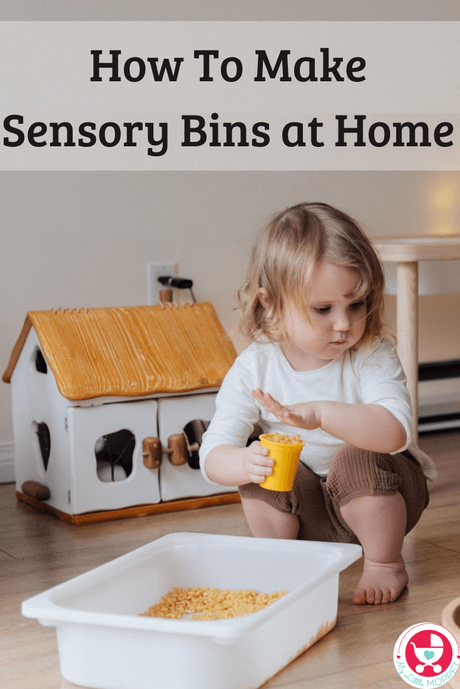
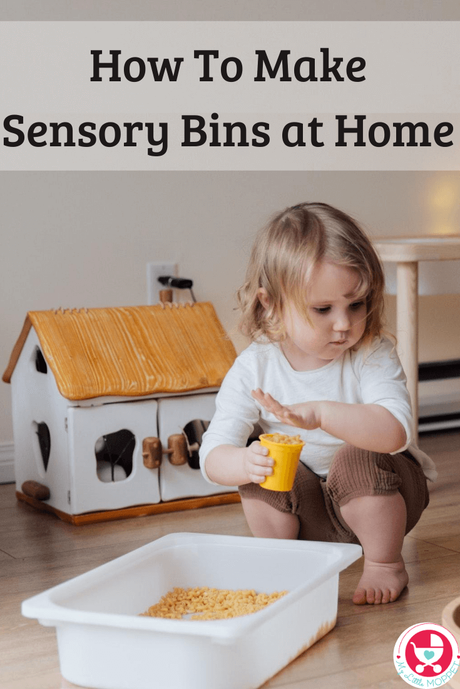
While it may seem overwhelming, sensory bins are really easy to create. You just need to know some simple basic items that need to be included in every sensory bin you make for your child.
1. Storage Bin
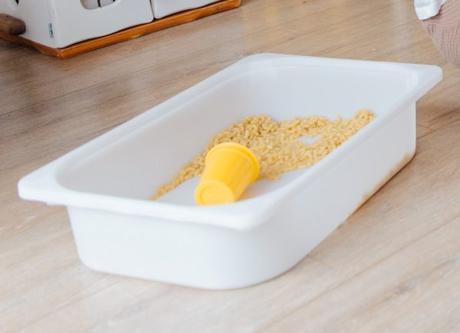
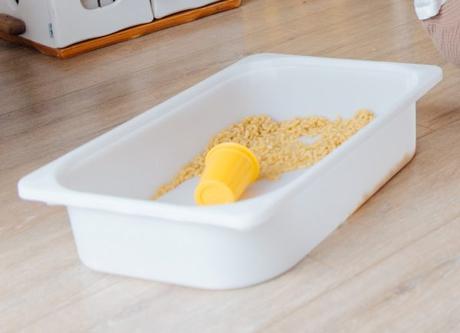
I’ve found the best bins to use are clear plastic bins with lids. Bins with lids are a must because they help contain the mess, plus help store the sensory items for another time. There are a wide range of bin sizes to get and the size you need all depends on your preference, storage space available, and the sensory bin activity you are choosing to make.
Personally, I’m finding small plastic bins to be my go-to for sensory play because of limited storage space. I use shoe size containers with lids. These are big enough to hold plenty of sensory items, yet easily stack and store away in a closet.
2. A Base/Filler
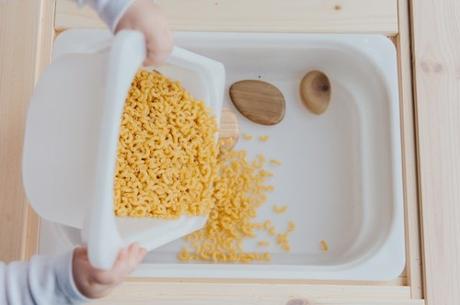
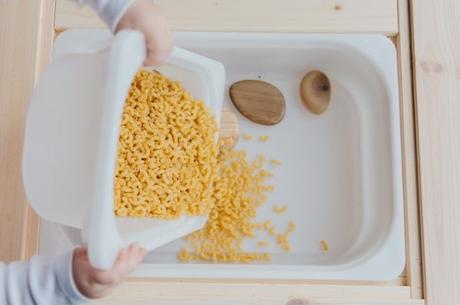
A base or filler is a sensory item that makes up the bulk of the sensory activity. While it may seem overwhelming, there are a million options available for fillers/bases! But don’t be overwhelmed because sometimes the best fillers are everyday objects like leaves or rice.
Although I can’t possibly list every option to use as a base, here is a list of fillers to help get you started with sensory bins:
- Rice
- Pasta
- Aquarium rocks
- Water beads
- Pom poms
- Water
- Kinetic sand
- Stones
- Shaving cream
- Dirt
- Ribbon
- Balls
- Cotton batting
- Loom bands
- Beads
- Crepe paper
- Silk scarves
- String
If you’re making a sensory bin for a child with sensory processing or autism, think about your child’s sensitivities and interests. This will help you decide on what fillers to add to the bin. For instance, my son is obsessed with anything circular (balls, rolls of duct tape, etc.).
From the list above I would use balls, loom bands, water beads, and pom poms to his sensory bins. These circular items will interest him the most. But I also need to think about his sensitivities in order to decrease them. My son does not like the feel of pasta. So for a sensory bin, I could use colored cooked pasta.
3. Tools
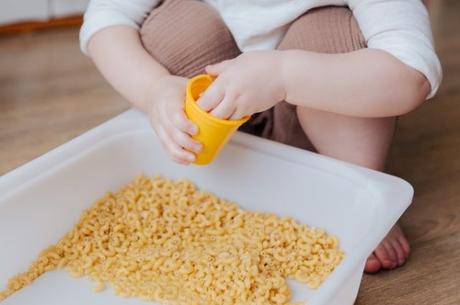
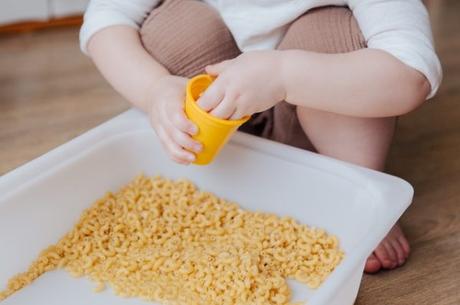
Tools are anything your child can use to manipulate a sensory base or filler. Things that can be used to scoop, pour, measure, pick up, etc. Many tools your child uses will work his/her fine motor skills. This is important for children with autism who struggle with fine motor skills used for everyday tasks like holding a pencil and writing or getting dressed.
Common tools to use in sensory bins include:
- Cups
- Tongs
- Funnels
- Measuring cups
- Cupcake tin
4. Fun Extras
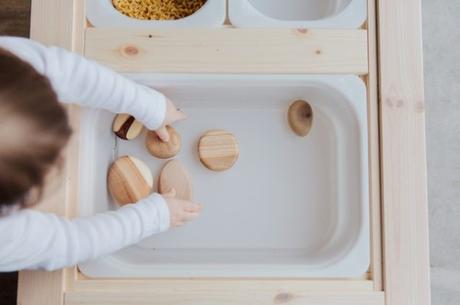
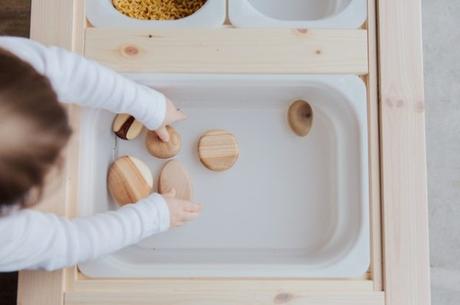
Fun extras are anything you want to add to a sensory bin to stimulate another sense or just for fun. These extra items are great for themed sensory bins. For example, if you want to go for an ocean theme sensory bin, combine blue water beads with small ocean figurines like sharks, fish, and starfish.
Here are some other ideas for fun extras:
- Trucks
- Cars
- Cookie cutters
- Legos
- Plastic letters and numbers
- Plastic animals
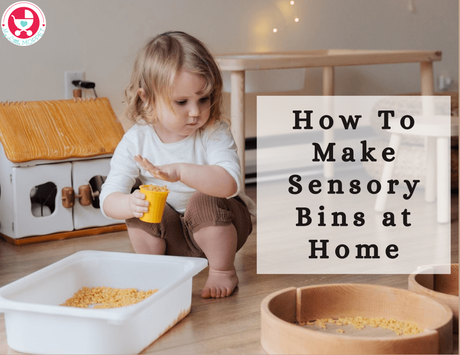
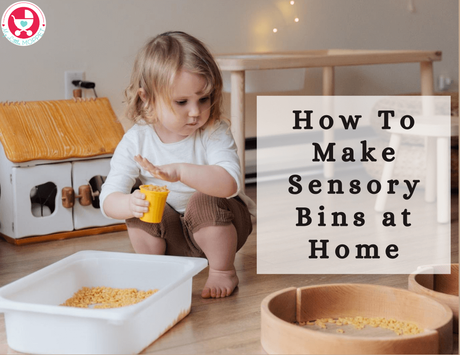
Author
Liz Talton is the contributing author for the Speech Blubs blog. After her son received an Autism Spectrum Disorder evaluation, she decided to do all she can to help her little one. She is a full-time blogger, and a creator of Pitter Patter of Baby Feet, a website dedicated to trying to conceive; fertility; pregnancy; mental health and anything related to motherhood. Before starting a family, she received a master’s degree in forensic psychology and mental health.
References:
https://www.verywellfamily.com/why-sensory-play-is-important-2086510
https://www.pre-kpages.com/what-is-a-sensory-bin/
TweetPinShareWhatsAppEmailFiled Under: Parenting, Play Activities, toddler Activities Tagged With: activities, creative play activities, fine motor activities for kids, Fun activities for little kids, Indoor play activities for toddlers, play activities, Play activities with small kids, sensory, toddler activities, TODDLERS
